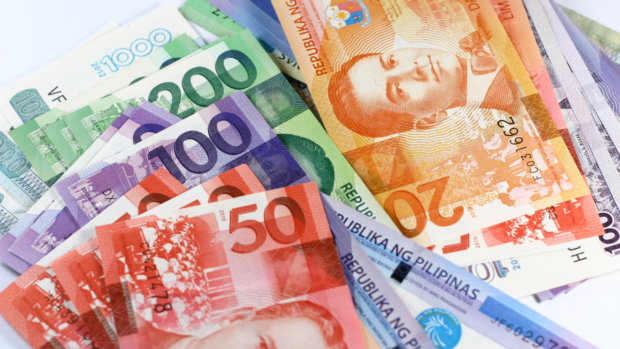Peso seen sinking to new record low in Q1 2023

Philippine peso bills (INQUIRER.net stock photo)
MANILA, Philippines — The US dollar may start to weaken this semester, but even then the Philippine peso may continue to lose against the greenback and sink to its weakest in early 2023.
Deutsche Bank said in a commentary the peso remains on a downtrend over the next nine months, falling to 55.50:$1 during the current quarter then to 56:30:$1 in the fourth quarter before reaching 56.60:$1 in the first quarter of next year.
After that, the German bank expects the peso to gradually gain strength and return to current levels — at about 55 per dollar — by the fourth quarter of 2023.
“Commodity price shocks and/or more aggressive posturing by the Fed [US Federal Reserve] have weighed on Asian currencies and this weakness is likely to continue through 1H [first semester of] 2023,” Deutsche Bank said in a comment penned by Juliana Lee and Michael Spencer.
On July 5, the peso closed at 55.23 against the dollar, yet another low of almost 17 years or since the local currency closed at 55.26:$1 on Oct. 25 2005.
The peso sank to its weakest against the US dollar on Sept. 27, 2004, when it closed spot trading at 56.45:$1.
Some stability
According to Michael Ricafort, chief economist at the Rizal Commercial Banking Corp., there had been “some semblance of stability on the peso exchange rate since last week.”
Ricafort said this happened after the recent signals of a possible bigger policy rate hike by Bangko Sentral ng Pilipinas (BSP) “if necessary and if supported by economic data.” He meant an increase of 50 basis points compared to the two previous rate hikes of 25 basis points each.
He said a more aggressive pace of BSP rate increase provides greater support for the peso in terms of interest rate differentials with the United States, especially with more US Fed rate hikes still expected.
Inflation expectations
Fitch Solutions said that despite their view of a strong US dollar, a number of factors are looking less bullish for the American currency, including falling inflation expectations, lopsided positioning by investors, and an overvaluation of the currency.
“While inflation remains high, inflation expectations [in the United States] have been falling since late March, which could see interest rate expectations and short-dated bond yields decline over the coming months,” the company said.
—RONNEL W. DOMINGO

